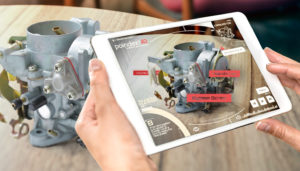 The method is of course proprietary, and the company declined to reveal their patent-pending secrets to me. It’s not extracting a silhouette (my first guess) or using any kind of depth mapping — unlike something like Microsoft’s HoloLens or Google’s Project Tango, it works with ordinary RGB cameras on ordinary smartphones and tablets.
The method is of course proprietary, and the company declined to reveal their patent-pending secrets to me. It’s not extracting a silhouette (my first guess) or using any kind of depth mapping — unlike something like Microsoft’s HoloLens or Google’s Project Tango, it works with ordinary RGB cameras on ordinary smartphones and tablets.
A lot of that covers the usual promises made on behalf of AR, but being able to do it without markers, in a variety of lighting conditions, with very low latency and high accuracy — that’s something plenty of companies could use today in everyday applications like maintenance and training.
That’s why Gravity Jack is focusing on industry to start: plenty of companies have heard about the potential benefits of AR, but those benefits tend to be in the hand-wavy near future.
See the full story here: https://techcrunch.com/2017/04/11/gravity-jacks-poindextar-tracks-objects-smallest-details-for-augmented-reality-anywhere/